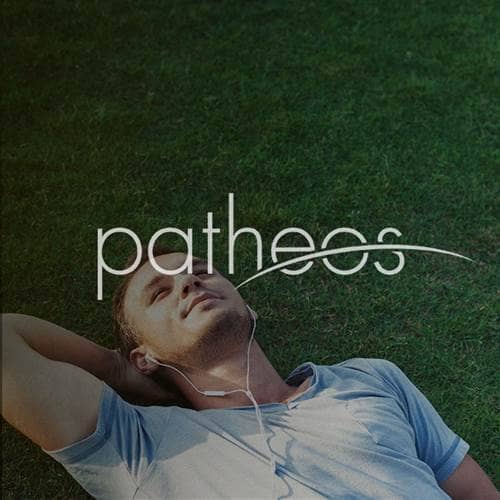- Trending:
- Pope Leo Xiv
- |
- Israel
- |
- Trump
- |
- Social Justice
- |
- Peace
- |
- Love

RELIGION LIBRARY
Scientology
Beginnings
L. Ron Hubbard (1911-1986) is the founder of the Scientology religion. The word Scientology, coined by L. Ron Hubbard, comes from the Latin scio, which means "knowing, in the fullest meaning of the word" and the Greek word logos, which means "study of." Scientology is further defined as "the study and handling of the spirit in relationship to itself, universes, and other life."
Scientology emerged in several stages in the decade following World War II. After his discharge from the U.S. Navy, L. Ron Hubbard began to study the functioning of the human mind. These reflections led to a series of short publications on Dianetics, the name he gave to his new approach to gaining mental health. A monograph, Dianetics: The Original Thesis appeared in 1948. The original treatise produced Hubbard's first converts, including John W. Campbell, Jr., editor of Astounding Science Fiction, a popular newsstand periodical for which Hubbard had written over the years, and a physician, Joseph Winter.
With this early support, Hubbard created the Hubbard Dianetic Research Foundation, headquartered in Elizabeth, New Jersey. Shortly thereafter, Hubbard published his article, "Dianetics: The Evolution of a Science," in the May 1950 issue of Astounding. The positive response to that article was magnified by the publication of Dianetics: The Modern Science of Mental Health, which appeared just weeks after the Astounding article. Though released by a relatively obscure publishing house, the book soon hit the New York Times best-seller list and remained there for the rest of the year.
Through the Hubbard Dianetic Research Foundation, Hubbard began to offer classes that trained students to be "auditors," people capable of guiding Dianetic sessions for individuals, and he toured the country to lecture on the new science. Dianetics concentrated on the mind, believed to be the mechanism that received, recorded, and stored images of experiences. By exploring one's mind, Hubbard maintained, a variety of widely-experienced dysfunctional conditions, today referred to as stress-related disorders, could be alleviated. The auditors assisted individuals by listening to and directing the exploration of their minds.
From his lecturing across the United States on the principles presented in Dianetics, Hubbard became the leader of a fast-growing movement that, at the time, lacked much centralized organization. The early movement grew faster than Hubbard could oversee, and a number of competing organizations arose, each with its own variation on Hubbard's ideas and practices. People who purchased Dianetics were not waiting for his assistance before beginning their own self-auditing. Hubbard responded to the chaotic situation by training professional auditors and, in 1952, authoring two additional texts -- Science of Survival and Self-Analysis.
Equally importantly, he collaborated with Volney Mathison, an engineer, in the development of the electropsychometer or E-meter, a device that measured emotional reactions by means of a minuscule electrical current sent through the body. Though different, the E-meter was consistently compared to a lie detector. Hubbard taught that the changes monitored by the E-meter revealed what the mind was doing when a person was directed to think of something. The E-meter gave Dianetics a means of quantifying the counseling experience, and subsequently the major task of the auditor came to be the accurate reading and interpretation of the information produced by it.
As Hubbard continued to research the mind, he made a seemingly small but key shift in his studies, turning his attention away from the mind itself to what he posited to be the entity that observed the images that the mind was storing. He named that observer-entity the thetan, from the Greek letter theta, for thought or life. To outsiders, the thetan closely resembled what other religions would call the soul or spirit. Exploring the thetan also led Hubbard to consider its existence in a number of previous lifetimes -- what many would call reincarnation.
A debate about this within the board of directors of the Hubbard Dianetic Research Foundation cost Hubbard the support of a number of its leading members, including that of Dr. Winter, who had written the preface to the original edition of Dianetics and who had been spearheading the effort to have Dianetics recognized by the professional medical world. Dianetics had been centered solely on the mind. Ruminations on the implications of the existence of the thetan, a spiritual essence of human beings, pushed Dianetics' evolution into Scientology, and in 1952 Hubbard founded the Hubbard Association of Scientologists and launched the Journal of Scientology. He also began issuing a regular series of technical publications to upgrade the auditors' expertise in light of the barrage of new insights. Hubbard was now clearly venturing into theological realms.
While "mind" remains a contested entity in scientific circles, "spirit" is an even more nebulous entity. Hubbard's emphasis on the thetan and his growing consideration of the thetan's role in cosmic history suggested that Scientology was moving into the field of religion, and in 1953 students of Dianetics and Scientology began to affirm Scientology's role as their religion. The affirmations culminated in February 1954 when some of Hubbard's followers took the lead, independently of him though clearly with his blessing, in organizing the first local Church of Scientology, in Los Angeles, California. A second church, organized in Auckland, New Zealand, soon followed it. In March 1955, Hubbard moved to Washington, D.C., and opened the Founding Church of Scientology and assumed the role of executive director.
By this time, Scientology was already spreading internationally. People in the English-speaking world had begun self-auditing using the basic text, and Hubbard began dividing his time between London and Washington, speaking and organizing his followers. Translations of his writings into other languages began to be produced, and in 1959 the first church in a non-English-speaking land opened in Paris, France.
Study Questions:
1. Describe the time period in which Scientology developed. Why do you believe it gained popularity?
2. What is the Hubbard Dianetic Research Foundation? What does it teach?
3. Who was Volney Mathison? How did his development impact Scientology?
4. What is the thetan? How did its exploration help Scientology to become a religion?










